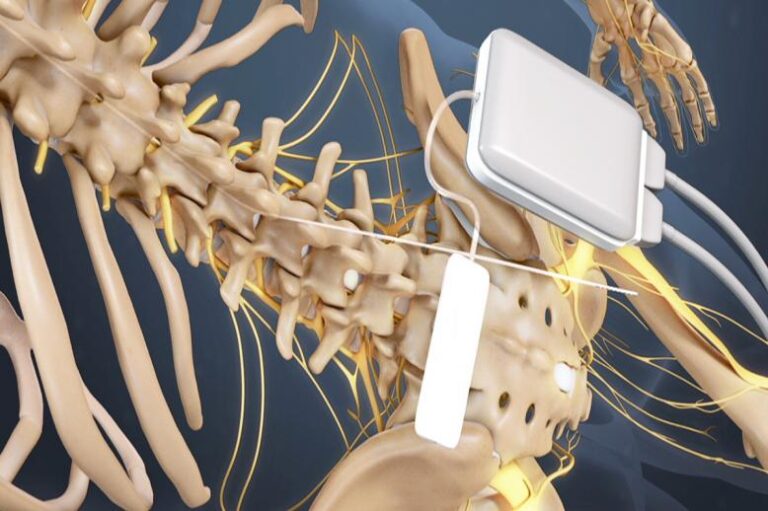Spinal Cord Stimulator

A spinal cord stimulator is a small device that is surgically implanted between the spinal cord and the vertebrae that allows patients to send an electrical impulse when they experience pain. The electrical impulses are thought to alter how the brain senses pain, and act almost like a TENS unit to block pain signals.
It’s like a pacemaker for chronic pain. Spinal Cord Stimulators don’t alter the spine or fix underlying issues, but do work as a pain modulator so that you are able to live daily life without debilitating pain. There are a few different types of stimulators you can select from. This decision is very personal and best made in conjunction with our doctors here who have lots of experience with the various models and can help you understand the pros and cons of each so you are able to make the best decision for your body and lifestyle.
We almost always implant these after an operation has failed to bring relief but the reality is, this treatment can come before surgery is considered to avoid the risks of an invasive back surgery altogether. Because of the Spinal Cord Stimulator, most patients are able to wean down or get completely off daily pain medication, which is always our goal with every patient. For those who suffer from back pain; work, life and play can be near impossible. Being able to return those who suffer back to high function without the use of medication is a huge win for us!
Our goal is to treat patients before major surgery is considered so this is a great option for those who are considering surgery due to chronic, debilitating pain. It also works very well for post-surgical pain.


